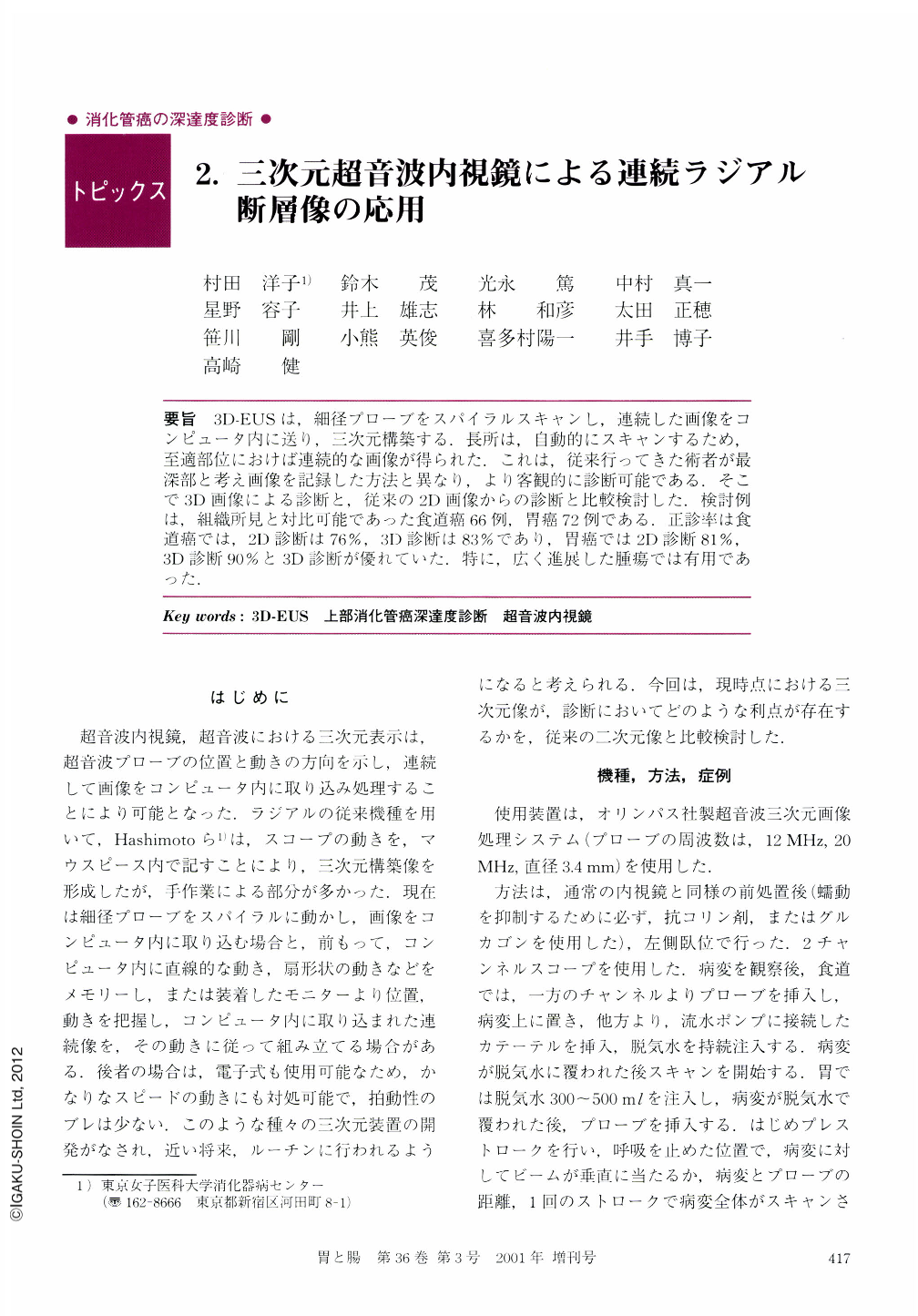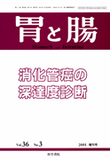Japanese
English
- 有料閲覧
- Abstract 文献概要
- 1ページ目 Look Inside
- サイト内被引用 Cited by
要旨 3D-EUSは,細径プローブをスパイラルスキャンし,連続した画像をコンピュータ内に送り,三次元構築する.長所は,自動的にスキャンするため,至適部位におけば連続的な画像が得られた.これは,従来行ってきた術者が最深部と考え画像を記録した方法と異なり,より客観的に診断可能である.そこで3D画像による診断と,従来の2D画像からの診断と比較検討した.検討例は,組織所見と対比可能であった食道癌66例,胃癌72例である.正診率は食道癌では,2D診断は76%,3D診断は83%であり,胃癌では2D診断81%,3D診断90%と3D診断が優れていた.特に,広く進展した腫瘍では有用であった.
In 3D-EUS, a series of images is obtained by a spiral scan using catheter type probes, linked to a computer. Following just one scan, continuous images of lesions are automatically obtained. The deepest point is able to be chosen objectively based on comparison with the other images in the series in both linear and radial direction. This enables a more accurate judgment of the depth of invasion. In this study,2D judgments using images from radial scanning and 3D judgments using images saved on computers were compared in 66 cases of esophageal cancer and 72 cases of gastric cancer.
In esophageal cancer, the depth of cancer invasion was accurately determined in 76% of cases by 2D and in 83% of cases by 3D. In gastric cancer, the depth of cancer invasion was accurately determined in 81% of cases by 2D and in 90% of cases by 3D. It was concluded that 3D images offered more accurate data for judgments than 2D.

Copyright © 2001, Igaku-Shoin Ltd. All rights reserved.


